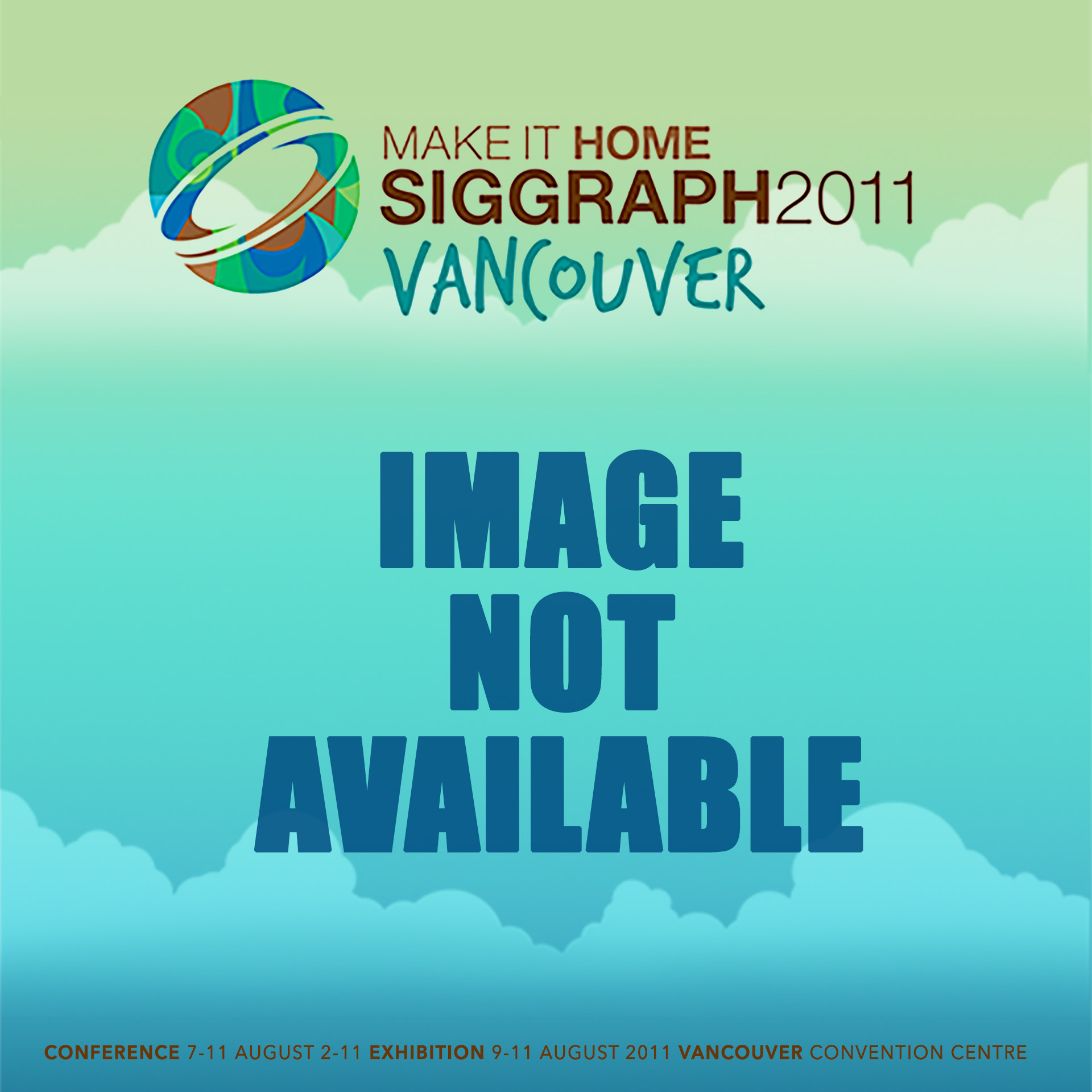“Perceptually based tone mapping for low-light conditions” by Kirk and O’Brien
Conference:
Type(s):
Title:
- Perceptually based tone mapping for low-light conditions
Presenter(s)/Author(s):
Abstract:
In this paper we present a perceptually based algorithm for modeling the color shift that occurs for human viewers in low-light scenes. Known as the Purkinje effect, this color shift occurs as the eye transitions from photopic, cone-mediated vision in well-lit scenes to scotopic, rod-mediated vision in dark scenes. At intermediate light levels vision is mesopic with both the rods and cones active. Although the rods have a spectral response distinct from the cones, they still share the same neural pathways. As light levels decrease and the rods become increasingly active they cause a perceived shift in color. We model this process so that we can compute perceived colors for mesopic and scotopic scenes from spectral image data. We also describe how the effect can be approximated from standard high dynamic range RGB images. Once we have determined rod and cone responses, we map them to RGB values that can be displayed on a standard monitor to elicit the intended color perception when viewed photopically. Our method focuses on computing the color shift associated with low-light conditions and leverages current HDR techniques to control the image’s dynamic range. We include results generated from both spectral and RGB input images.
References:
1. Buck, S. L., Knight, R. F., and Bechtold, J. 2000. Opponent-color models and the influence of rod signals on the loci of unique hues* 1. Vision research 40, 24, 3333–3344.Google Scholar
2. Bullough, J. D., and Rea, M. S. 2000. Simulated driving performance and peripheral detection at mesopic and low photopic light levels. Lighting Research and Technology 32, 4, 194.Google ScholarCross Ref
3. Bureau Central de la CIE. 1951. CIE Proceedings (1951), vol. 3.Google Scholar
4. Burns, P. D., and Berns, R. S. 1996. Analysis of multispectral image capture. In Proc. Fourth Color Imaging Conference: Color Science, Systems, and Applications, 19–22.Google Scholar
5. Cao, D., Pokorny, J., Smith, V. C., and Zele, A. J. 2008. Rod contributions to color perception: linear with rod contrast. Vision research 48, 26, 2586–2592.Google Scholar
6. Debevec, P. E., and Malik, J. 1997. Recovering high dynamic range radiance maps from photographs. In Proceedings SIGGRAPH 97, 369–378. Google ScholarDigital Library
7. Durand, F., and Dorsey, J. 2000. Interactive tone mapping. In Proceedings of the Eurographics Workshop on Rendering Techniques, 219–230. Google ScholarDigital Library
8. Durand, F., and Dorsey, J. 2002. Fast bilateral filtering for the display of high-dynamic-range images. In Proceedings SIGGRAPH 2002, 257–266. Google Scholar
9. Ferwerda, J. A., Pattanaik, S. N., Shirley, P., and Greenberg, D. P. 1996. A model of visual adaptation for realistic image synthesis. In Proceedings SIGGRAPH 96, 249–258. Google Scholar
10. Khan, S. M., and Pattanaik, S. N. 2004. Modeling blue shift in moonlit scenes by rod cone interaction. Journal of Vision 4, 8.Google ScholarCross Ref
11. Kohonen, O., Parkkinen, J., and Jääskeläinen, T. 2006. Databases for spectral color science. Color Research and Application 31, 5 (Oct.), 381–390.Google ScholarCross Ref
12. Kuang, J., Johnson, G. M., and Fairchild, M. D. 2007. icam06: A refined image appearance model for hdr image rendering. Journal of Visual Communication and Image Representation 18, 406–414. Google ScholarDigital Library
13. Malkiewicz, K. 1992. Film Lighting: Talks with Hollywood’s Cinematographers and Gaffers. Simon and Schuster.Google Scholar
14. Maloney, L. T., and Wandell, B. A. 1987. Readings in computer vision: issues, problems, principles, and paradigms. ch. Color constancy: a method for recovering surface spectral reflectance, 293–297. Google Scholar
15. Mantiuk, R., Rempel, A. G., and Heidrich, W. 2009. Display considerations for night and low-illumination viewing. In Applied Perception in Graphics and Visualization, 53–58. Google Scholar
16. Miyahara, E., Smith, V. C., and Pokorny, J. 1993. How surrounds affect chromaticity discrimination. Journal of the Optical Society of America A 10, 4, 545–553.Google ScholarCross Ref
17. Mohan, A., Raskar, R., and Tumblin, J. 2008. Agile spectrum imaging: Programmable wavelength modulation for cameras and projectors. Computer Graphics Forum 27, 2, 709–717.Google ScholarCross Ref
18. Paris, S., and Durand, F. 2006. A fast approximation of the bilateral filter using a signal processing approach. In European Conference on Computer Vision. Google Scholar
19. Park, J., Lee, M., Grossberg, M. D., and Nayar, S. K. 2007. Multispectral Imaging Using Multiplexed Illumination. In IEEE International Conference on Computer Vision (ICCV).Google Scholar
20. Pattanaik, S. N., Ferwerda, J. A., Fairchild, M. D., and Greenberg, D. P. 1998. A multiscale model of adaptation and spatial vision for realistic image display. In Proceedings SIGGRAPH 98, 287–298. Google Scholar
21. Schechner, Y. Y., and Nayar, S. K. 2002. Generalized Mosaicing: Wide Field of View Multispectral Imaging. IEEE Transactions on Pattern Analysis and Machine Intelligence 24, 10 (Oct.), 1334–1348. Google ScholarDigital Library
22. Shin, J. C., Matsuki, N., Yaguchi, H., and Shioiri, S. 2004. A color appearance model applicable in mesopic vision. Optical Review 11, 4, 272–278.Google ScholarCross Ref
23. Shin, J. C., Yaguchi, H., and Shioiri, S. 2004. Change of color appearance in photopic, mesopic and scotopic vision. Optical Review 11, 4, 265–271.Google ScholarCross Ref
24. Stockman, A., and Sharpe, L. T. 2000. The spectral sensitivities of the middle-and long-wavelength-sensitive cones derived from measurements in observers of known genotype. Vision Research 40, 13, 1711–1737.Google ScholarCross Ref
25. Tumblin, J., and Rushmeier, H. E. 1993. Tone reproduction for computer generated images. IEEE Computer Graphics and Applications 13, 6, 42–48. Google ScholarDigital Library
26. Yasuma, F., Mitsunaga, T., Iso, D., and Nayar, S. K. 2008. Generalized Assorted Pixel Camera: Post-Capture Control of Resolution, Dynamic Range and Spectrum. Tech. rep., Nov.Google Scholar




